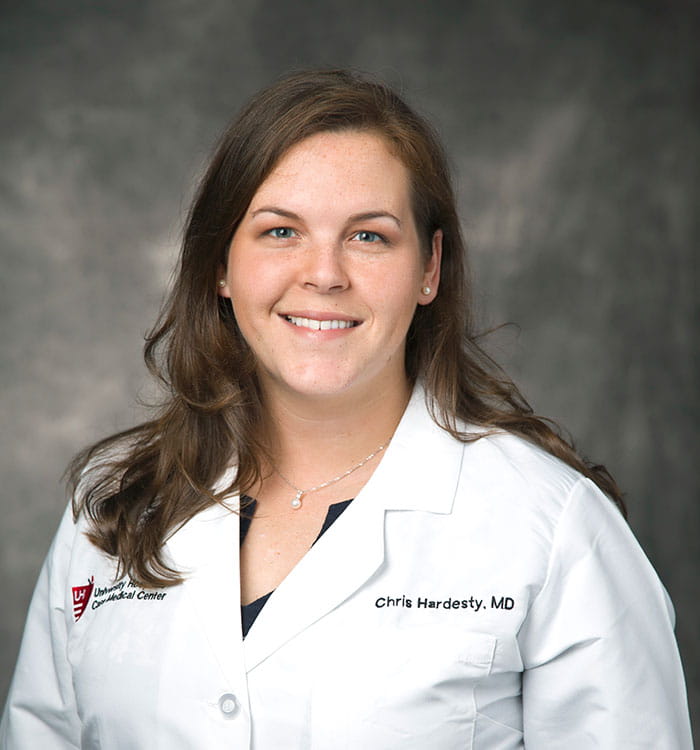Sparing the Scalpel
January 04, 2018

Innovations in Pediatrics Winter 2016 - Download PDF
Newly approved devices decrease repeated surgeries for children with early-onset scoliosis
 Christina Hardesty, MD
Christina Hardesty, MDSurgical treatment for early-onset scoliosis (EOS) has typically been limited to attaching growing rods to the spine, with repeat surgeries every six months to manually move the rods and allow for growth.
“Kids who develop scoliosis early in life have lots of growth left,” says Christina Hardesty, MD, Pediatric Orthopaedic Surgeon, UH Rainbow Babies & Children’s Hospital , Assistant Professor of Pediatrics and Orthopaedics, Case Western Reserve University School of Medicine. “We can’t treat them in the typical way by fusing the spine. The chest still needs to grow.”
Two newly approved devices, however, are decreasing the need for repeat surgeries among kids with EOS. The Shilla growth guidance system, marketed by Medtronic, uses a special non-locking screw at the top and bottom of the growing rod, allowing correction of the child’s curvature by screws that slide along the rod as the child’s spine grows.
Another new device, MAGEC, marketed by Ellipse Technologies, Inc., uses a magnetic device inside the central housing on the growing rod. The orthopaedic surgeon expands the rod painlessly in the clinic via external remote control.
Shilla and MAGEC both received approval from the U.S. Food and Drug Administration (FDA) in September 2014. At UH Rainbow Babies & Children’s Hospital, Dr. Hardesty is using both new devices for select patients with EOS.
“These new devices are best for kids whose curves are flexible enough that they can be relatively straight when you start the process,” she says. “MAGEC is probably getting more attention at the moment, but Shilla is right behind it.”
By reducing the number of surgeries a child needs, these devices reduce hospitalization time, infection risk and anesthesia exposure, likely leading to better outcomes and lower costs.
“With every surgery, risk of infection goes up by 17 percent,” Dr. Hardesty says. “That’s huge. If you’re eliminating these repeat surgeries, you’re lowering the risk of infection and you’re lowering the risk of the spine healing. Every time we open them up, we risk early fusion of the spine because we’re exposing bone. Children are also at a slightly increased risk of decrease in cognitive function when they’re exposed to repeat anesthetics.”
Dr. Hardesty and her colleague, George Thompson, MD, Division Chief of Pediatric Orthopaedic Surgery at UH Rainbow, are documenting outcomes for their Shilla and MAGEC patients as part of the Growing Spine Study Group, the prestigious research consortium addressing EOS. However, Dr. Hardesty says she’s already encouraged about the potential of the new devices.
“Fewer surgeries are always better,” she says. “These devices represent a lower-risk way of treating EOS that means a slightly more normal life for these kids.”
For more information on treatment for EOS or other pediatric orthopaedic services at UH Rainbow Babies & Children’s Hospital, email Peds.Innovations@UHhospitals.org.
Tags:


